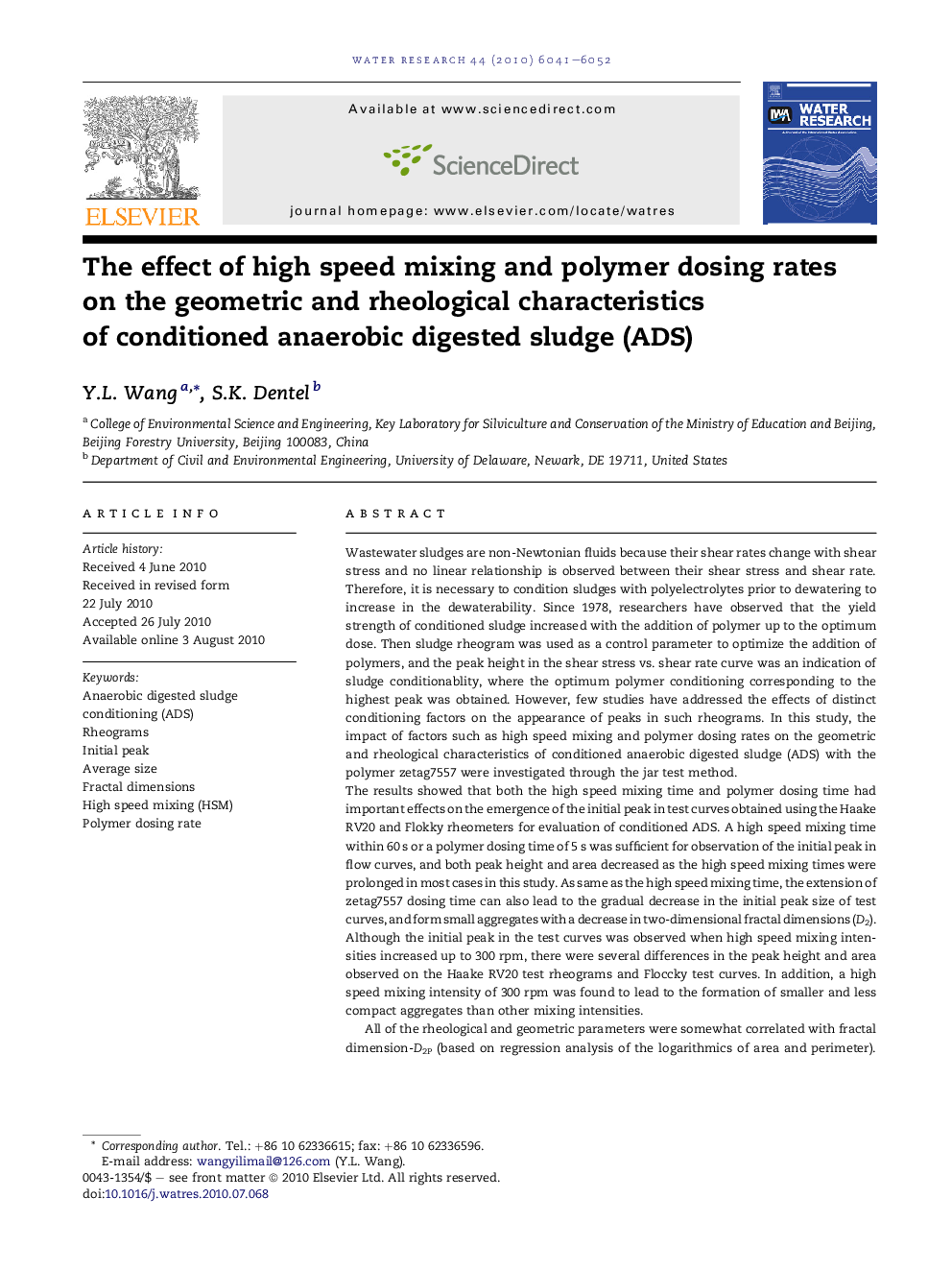| کد مقاله | کد نشریه | سال انتشار | مقاله انگلیسی | نسخه تمام متن |
|---|---|---|---|---|
| 4483693 | 1316897 | 2010 | 12 صفحه PDF | دانلود رایگان |

Wastewater sludges are non-Newtonian fluids because their shear rates change with shear stress and no linear relationship is observed between their shear stress and shear rate. Therefore, it is necessary to condition sludges with polyelectrolytes prior to dewatering to increase in the dewaterability. Since 1978, researchers have observed that the yield strength of conditioned sludge increased with the addition of polymer up to the optimum dose. Then sludge rheogram was used as a control parameter to optimize the addition of polymers, and the peak height in the shear stress vs. shear rate curve was an indication of sludge conditionablity, where the optimum polymer conditioning corresponding to the highest peak was obtained. However, few studies have addressed the effects of distinct conditioning factors on the appearance of peaks in such rheograms. In this study, the impact of factors such as high speed mixing and polymer dosing rates on the geometric and rheological characteristics of conditioned anaerobic digested sludge (ADS) with the polymer zetag7557 were investigated through the jar test method.The results showed that both the high speed mixing time and polymer dosing time had important effects on the emergence of the initial peak in test curves obtained using the Haake RV20 and Flokky rheometers for evaluation of conditioned ADS. A high speed mixing time within 60 s or a polymer dosing time of 5 s was sufficient for observation of the initial peak in flow curves, and both peak height and area decreased as the high speed mixing times were prolonged in most cases in this study. As same as the high speed mixing time, the extension of zetag7557 dosing time can also lead to the gradual decrease in the initial peak size of test curves, and form small aggregates with a decrease in two-dimensional fractal dimensions (D2).Although the initial peak in the test curves was observed when high speed mixing intensities increased up to 300 rpm, there were several differences in the peak height and area observed on the Haake RV20 test rheograms and Floccky test curves. In addition, a high speed mixing intensity of 300 rpm was found to lead to the formation of smaller and less compact aggregates than other mixing intensities.All of the rheological and geometric parameters were somewhat correlated with fractal dimension-D2P (based on regression analysis of the logarithmics of area and perimeter). However, D2L(based on regression analysis of the logarithmics of area and maximum diameter) did not show good correlation with any other parameters. The median diameters of the aggregates were well correlated with one-dimensional fractal dimensions (D1).
Journal: Water Research - Volume 44, Issue 20, December 2010, Pages 6041–6052